With the recent string of lunar landing attempts, it’s interesting to consider how much things have changed – or stayed the same – since the first soft landing attempts in the 1960s with the US Ranger and USSR Luna landers. During the 1950s the possibility of landing a spacecraft on the Moon’s surface was investigated and attempted by both the US and USSR. This resulted in a number of lunar lander missions in the 1960s, with the US’s Ranger 3 and 5 missing the Moon, Ranger 4 nearly missing it but instead crashing into the far side of the Moon, and eventually the USSR’s Luna 9 making the first touchdown on the lunar surface in 1966 after a string of USSR mission failures.
What’s perhaps most interesting was how these first US and USSR spacecraft managed to touch down, with Luna 9 opting to inflate a landing airbag and bounce until it came to a halt. This approach had doomed Luna 8, as its airbag got punctured during inflating, causing a hard crash. Meanwhile the US’s Surveyor 1 was the first US spacecraft to land on the Moon, opting to use a solid-fuel retrorocket to slow the craft down and three liquid-fueled vernier thrusters to prepare it for a drop down from 3.4 meters onto the lunar surface.
Now, nearly 60 years later, the landers we sent regularly make it to the lunar surface, but more often than not end up crashing or toppling over into awkward positions. How much have lunar landings really changed?
Sad Tumbles
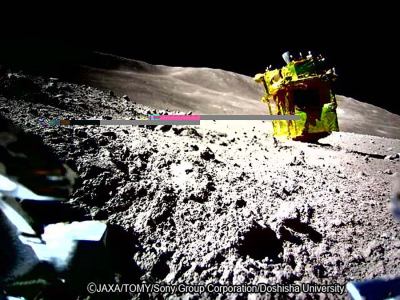
When Intuitive Machine’s Nova-C lander Odysseus made its way to the Moon this year on February 15, as part of the IM-1 (NASA’s CLPS-2) mission, tensions were high. The month before, Japan’s SLIM (Smart Lander for Investigating Moon) lunar lander had made a more or less soft touch-down on the lunar regolith, except for it tripping and falling over. The ironic part here was perhaps that SLIM had been carefully designed to enable the most precise landing on the Moon’s surface, combining a database of the landing site with detailed imaging to automatically land it within 100 meters of its intended landing site.
This included identifying potential hazards while hovering above the surface at about 50 meters. Unfortunately, this was the moment when one of the two main engine nozzles detached, causing the navigation computer to struggle to stay on course using the single main engine and the smaller thrusters. Ultimately the spacecraft ended up faceplanting into lunar regolith, causing its solar panels to end up facing largely away from the Sun and possibly causing additional damage. Despite this crippled state, SLIM still managed to more or less complete its mission – even surviving the lunar night – while highlighting how close the mission came to total failure.
The NASA Commercial Lunar Payload Services (CLPS) mission which proceeded IM-1 suffered an even more dramatic fate, when this CLPS-1 mission (Astrobotic’s Peregrine) suffered a catastrophic loss of propellant shortly after being inserted into a lunar injection orbit (LIO) by the launch vehicle. This led to the mission being aborted and after abandoning the LIO, the lander instead burned up in the Earth’s atmosphere after a six day sight-seeing tour around the planet. The cause of this failure was traced back to a valve which failed to fully close, causing an overpressure event that blew out part of the fuel system.
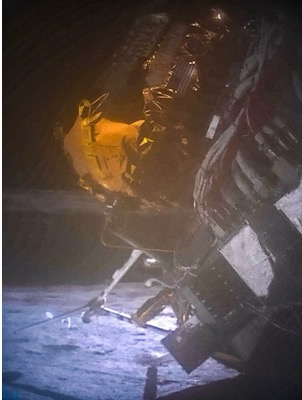
With these incidents in mind, IM-1’s Nova-C spacecraft geared up for landing on February 21st of 2024. During the commissioning burn on its course to the Moon only an issue with the star tracker had been reported, which gave some hope for a good outcome if no further issues cropped up. Once in lunar orbit, however, it was discovered that the laser rangefinder that was supposed to have guided the spacecraft to the surface could not be used, as before launch a safety switch had not been flipped, leaving the spacecraft effectively blind. An onboard payload called the Navigation Doppler Lidar (NDL) was used to compensate for this loss, but without the full integration into the board computer and the lower NDL refresh rate compared to the original laser rangefinder instrument, it meant a gamble.
Shockingly, it seemed that the lander had initially touched down successfully and was communicating with Earth. That’s when the ground team realized that something was off, as the communication was faint. Ultimately it was found that the use of the NDL instead of the laser rangefinder had apparently resulted in a too fast descent rate, with one or more of the landing legs getting snapped off as the spacecraft skidded across the surface before tipping over onto an externally mounted oxygen tank at a roughly thirty degree angle.
At this angle, the communication with Earth is severely compromised, and few of its solar panels received enough light to charge the battery, but this was sufficient for science operations. By tweaking the communication equipment, the data rate could be increased as well, but much like SLIM the spacecraft had come very close to complete mission failure. By February 29 the spacecraft shut down for the lunar night after a week on the surface, with a possible revival if it survives the freezing temperatures.
Lander Evolution
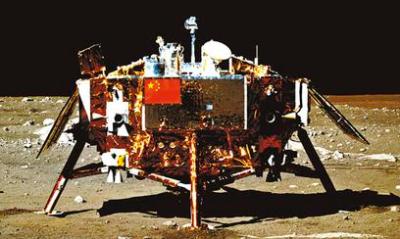
Although the basic concept of landing a spacecraft on the Moon has not changed since the 1960s, improvements have been made in terms of landing precision and automation. Yet the list of moon missions paints a harrowing picture of the success rate in the 21st century. While orbiters rarely fail any more, landers remain tricky unless you happen to be China, with this nation having launched three lunar landers (Chang’e 3, 4 and 5), all of which succeeded, including the Chang’e 5 sample return mission. This sample return mission was the first (successful) one since Luna 24 in 1976.
The popular descent method for lunar landings is akin to that pioneered by US Ranger spacecraft, with active control down to the surface, albeit without the last harrowing drop of the Ranger spacecraft. This involves one or more engines that allow the spacecraft to reduce its velocity relative to the lunar surface, while thrusters provide attitude control. Especially in the low gravity environment of the Moon, this approach should allow for relatively easy and precise landings.
Even so, this landing method failed for Israel’s Beresheet lander, which crashed due to a gyroscope issue causing the main engine to be turned off prematurely, leading to the spacecraft lithobraking into the Moon at 500 km/h. India’s Chandrayaan-2 mission was a partial success, with the Vikram lander lithobraking into the Moon at about 210 km/h, attributed to a range of software and other issues.
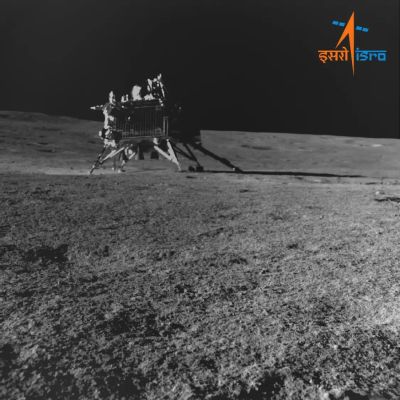
JAXA’s OMOTENASHI mini-lander attempted a hybrid landing in 2022 with both a solid-fuel retrorocket and an airbag, but this lander never got close to a landing attempt, due to what appears to be a failure with its solar panel. Later that year, a private Japanese company called ispace attempted a landing with their Hakuto-R spacecraft. This lander was lost during the landing attempt on April 25th, 2023, when it seems the onboard computer dismissed the radar altimeter data as faulty, and kept hovering at an altitude of 5 km until its propellant was exhausted.
Following these failures, India managed to nail the landing of the second iteration of Vikram with the Chandrayaan-3 mission, making it also the first spacecraft to land near the lunar South Pole, in what is likely to be the first of many missions to target this part of the Moon. In between this mission and the SLIM, Peregrine and IM-1 missions, Russia also attempted a last hurrah by reviving the Soviet-era Luna program with the Luna 25. This lander did however end up lithobraking into the Moon due to an issue with its maneuvering engines while trying to establish a lunar orbit, causing it to intersect with the Moon instead.
Future Outlook
Although the period between the late 1970s and the beginning of the 2000s can be considered a lost period in terms of Moon missions, it would seem that things are ramping up once more. Interestingly, we have seen mostly newcomers (India, Japan, China) making a mark, while established parties with 20th-century lunar exploration experience have been largely absent (US), or the rumors of their revival (USSR’s Luna program) have been grossly overstated. What hasn’t changed, however, is that landing a spacecraft on the Moon still isn’t easy.
Whereas China in particular has demonstrated that good engineering and testing can give you a solid shot at successful missions, others have found their missions beset by technical problems that should have been either caught during testing, or have been part of a pre-launch checklist. Although the SLIM and IM-1 missions in particular managed to get their mission completed, this was ultimately more due to luck, with other landers less lucky.
As we can expect to see more lunar lander missions in the near future, it’ll be interesting to see how quickly these harsh lessons are learned, with perhaps landing a spacecraft on the Moon becoming routine rather than a harrowing experience amidst the scattered remnants of previously failed landings.

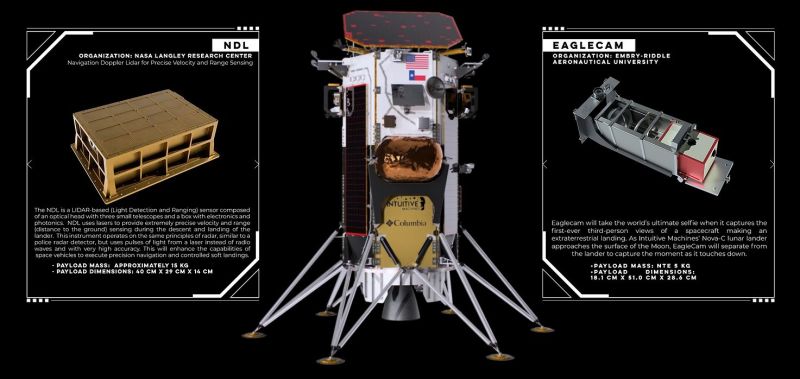














I once read the Thomas Kelly’ “Moon lander” https://www.amazon.com.br/Moon-Lander-Developed-Apollo-Module/dp/1588342735 telling the history of the actual moon lander with apollo 11; worth the read.
I like Lunokhod because it looks neat.
I cannot be classified in that category of people who are derogatorily labeled as conspiracy theorists (a label often used to mock, it is a well-tested technique in various topics to delegitimize those who raise doubts that are often legitimate), but just as clearly I do not belong to the opposing front dogmatists, so I don’t have to defend anyone and I’m not even interested in arguing to support theses or demolish others, there are many things that in my humble opinion are unclear regarding the Apollo missions (1969-1972) but what is now I would like to say it’s limited to a very specific thing that will happen in about 5 years.
There are no photos with decent resolution that frame the areas of the moon landings, and this is an incontrovertible fact, unless others have been published in the last two years, but in a few years the Giant Magellan Telescope will come into operation, and given that it is not a military instrument, we already know what its potential will be.
I take my note that I found 2 years ago from the giantmagellan.org website (the sentence is not very precise because I had translated it into Italian and now I have translated it back into english):
“the Giant Magellan Telescope has 50 million times the light-gathering power of the human eye. It will produce images sharp enough to see a city on Jupiter from Earth (if one existed)”.
The maximum distance of the Moon from the Earth is 405,000 km, the minimum distance of Jupiter from the Earth is 588,000,000; well, as you can see I took as reference the greatest distance for the Moon and the greatest for Jupiter and the difference is 1450 times.
Perhaps the controversy can be concluded in this way by pointing the telescope at the Moon or is it to be expected that there will be other inscrutable obstacles that prevent it from being used for a few minutes for this foolish purpose?
Correction to a part of my sentence in the previous postand
“…the minimum distance for Jupiter…”
People who have unwavering faith in conspiracy theories, when presented with new information that contradicts their beliefs will not change their minds. It is like arguing about basic genetic flaws in the bible (e.g. Adam and Eve or Noah’s ark), with people who have absolute faith there is no room for discussion. Even by mentioning such blasphemy I expect this post will be reported to be removed.
Are you talking about yourself?
“I cannot be classified in that category of people who are derogatorily labeled as conspiracy theorists (a label often used to mock, it is a well-tested technique in various topics to delegitimize those who raise doubts that are often legitimate)”
Sure you can! You’ve chosen to publicly doubt one of the most thoroughly-documented human endeavours in history. You’re a moon-landing denier, congratulations
Here is a simple reason for no high resolution pictures of old protected landing sites taken from orbit. At distance you need big heavy optics in orbit which is expensive to get there. And at low orbit heights, because your speed relative to the ground is much higher, it would be similar to taking a clear picture of a Formula One race car from a short distance, without tracking. All you will see is a blurred image (The problem is light, to capture a clear photo you need enough light to trigger the sensor elements with little noise and a fast capture speed for a clear/unblured image – the problem is the light goes down as the capture speed increases). Now let’s imagine that you have agile tracking and refocusing (high power, high weight) to help capture a tiny bit more light for the sensors, then the angle and distance to the object is changing rapidly which will make the image look mishaped.
The other thing is that there not a lot of hight contrast big stuff that was left on the moon to be imaged. And taking a photo of mostly white stuff on a surface that is mostly white is suboptimal in terms of sensor sensitivity.
So then you look towards SAR (Synthetic Apature RADAR), but that is not a photograph so the people who believe with absolute faith in conspiracy theories, will go “I want a photo, show me damn a photo!”.
Two or three years ago I found technical information on these topics and I should find it again but now I can’t, but for example with regards to exposure times the following data can be taken into account:
– the rotation speed of the earth at the equator is approximately 1700 km/h, and that of the moon is 16 km/h.
– it is possible to use multiple photographic exposures; for example, Hubble, for deep space, carried out 800 for the same subject (therefore given the proximity and brightness of the moon, many fewer would be needed) which can make up for the lack of time due to the speed of orbit of the hypothetical satellite around to the Moon.
– Ikonos satellite; it is placed in orbit around the Earth at a height of 680 km and the resolution of the photos is 1 meter.
– there are some lunar satellites that can be put into orbit at about 200 km: Chang’e-1, Chandrayaan-1, Kaguya, Lunar Reconnaissance Orbiter (LRO)
But beyond all the technical aspects, beyond the intelligent or silly objections, beyond the ridiculous excuses that occasionally present themselves to justify the umpteenth postponements of the next human lunar landings (one of which, two or three years ago stated that the suits were not yet ready because they presented problems to be solved, approximately 60 years after man’s first steps on the moon…) unlike others, it is not my intention to convince anyone, that’s why I was just focused on a single point, I’m just waiting to one day be able to see some decent photos, but it’s systematically replied that it’s a silly request and that whoever asks it is just a lunatic, I take note of this diagnosis but the observation remains unchanged
I agree with the skeptical and non-dogmatic point of view you have. I did not live through that era, and certainly do not accept things presented on TV now as the truth, whole truth, and nothing but the truth without verifiable evodence.
If I recall correctly, I heard an interview with Marc D Antonio (yeah yeah, make fun of me for bringing up a UFO guy, but he is knowledgeable on optics and cameras) where he broke down the items left on the lunar surface, and the resolution that various lunar imaging systems have – a couple of boosters are visible, but only as a few pixels. Footprints, flags, etc are simply too small to be resolved by those instruments, and there is math to support that.
All that being said, I certainly do not know whether the Giant Magellan (which will be operated from Earth’s surface), or satellite observatories (I think the big boys are at one of the Lagrange points?) would be able to make any better of an observation than the low lunar orbit systems.
If you’re going to deny we went to the moon, don’t pretend you’re going to be any more convinced by someone showing you imagery from a telescope than you were by what came from the cameras the crew carried at the time. It’s just like the flat earthers, they will disbelieve any verification method as soon as it doesn’t give the answer they want, no matter how many times they agree beforehand that it’d be a good method or that the preponderance of the evidence is what should be used. It’s a complete waste of resources to bother clearing up fake FUD. Give them an inch, they’ll take a mile…
OK. I’ll play.
First, could the Giant Magellan Telescope even look at the surface of the moon?
Yes, probably.
The moon moves through the sky just slightly faster than the background stars, about 15.5 degrees an hour versus 15 for the rest of the sphere. If the GMT is fast enough to track the stars at all attitudes, it should have no problem with the moon.
The GMT is an alt-az mount, so it’s more flexible than an old-school equatorial mount, and it will already have some sort of de-rotate stage for its instruments. It’s at 29 degrees south anyway, so the moon should be at a reasonable elevation most of the year.
The GMT uses mirrors 8.4m wide. Assume that there’s .5m space between the individual mirrors, so the overall edge-to-edge aperture is 26.2m
The main optical path is a classical Gregorian, with a final f/ ratio of about 8.19.
This implies that if you thought of it as something you could bolt to a normal camera, it would translate to a telephoto lens about 201600mm long.
And that’s exactly what we’re gonna do, because no matter how exquisitely delicate Magellan’s native instruments may be, they are still designed to work with very dim objects, so they are going to have large pixels. Too large.
For us image illumination is not an issue – after all the moon is a brightly sunlit object. What we’re after is *resolution* so we’re going to be better off with a plain ol’ terrestrial camera from a manufacturer that’s been fighting the megapixel wars for two decades.
The current flagship is the Nikon Z8. At 46 megapixels its pixels are small enough that they’re getting near the diffraction limit in an f8 system anyway, so this is about the optical limit and more pixels than this won’t help.
With our 35.9mm wide sensor, a 201600mm telephoto lens would give us an angle of view of .0102 degrees, or, at the 420,000km distance of the moon a field of view of just under 75km.
This is theoretically about 9 meters per pixel. The Nikon camera uses a Beyer array sensor, so it’s performance would actually be more like 18m, but I suppose if you could actually get them to lend you the Magellan for use with your Z8, the odds are pretty good Nikon would give you a sensor without the Beyer array in exchange for the bragging rights, so we’ll still call it 9 meters per pixel.
Frankly, a lot better than I would have thought, but that’s still 40 odd feet per pixel. You could see something the size of a house (rendered as one pixel) but it isn’t going to get you much in the way of imaging a lunar lander a fraction of that size.
But you don’t have to wait for the GMT. The Large Binocular Telescope in Arizona, specifically built for resolution, has almost the same aperture. Yes, the individual mirrors are smaller, but subject illumination is not a problem.
Or you might be better off with the twin Keck telescopes. They work in a pair with a very long baseline for infrared interferometry. Since you’re only going to get one pixel anyway, the landers, metal objects on legs, might stand out from the background more strongly in infrared than visible light, especially a few hours after local sunset, when they will cool faster than the background.
The Parnell cluster in Chile has similar capabilities.
But really, this is a lot of work to go through in light of the fact that the Lunar Reconnaissance Orbiter has been photographing the moon from as close as 20 miles every day since 2009 with resolutions better than half a meter.
In the decade+ that it’s been in orbit it has photographed _all_ the Apollo sites – over and over and over.
In fairness, in many of the photos the light is high and the shiny metal descent stage ends up overexposed against the dark regolith background, but that’s what you _expect_ to see when you photograph shiny aluminum against charcoal. Still, there have also been some very nice shots where the light is right.
The LRO has photographed Apollo 17 nineteen times with some of the photos taken in an oblique light where you can see decent detail.
It’s photographed Apollo 12 twenty three times, showing some really good shadows that demonstrate a three-dimensional object is down there.
Japan’s Selene probe has also photographed the Apollo landers glinting in the sun, but at less resolution than LRO.
The Indian orbiter, Chandrayaan-2 has been on-station since 2019 and it carries a better camera than LRO. India has been a pretty cagey with their data, but I’m gonna bet that in the past 4 years somebody on their team has looked down at the Apollo sites, and if there was nothing there the world would know it by now.
But… ultimately it kind of doesn’t matter what the GMT could do. For people that deny the hundred or so photos that _have_ been published, one more picture isn’t going to matter. It’s just “more people in on the conspiracy, man”.
Yup. I mean, the LRO’s images of Apollo 17 literally show the friggin’ rover and the tracks leading right to it. Nothing’s ever gonna satisfy these people.
Lithobraking, new word! Though it starts with regolith, splat.
regocide? (sorry)
interesting to note on ones that recently made it to surface at low or moderate speed (not a rocket scientist): tall, skinny, narrow footprint, possibly high cg; fell over. squat, wide footprint, possibly low cg; success.
Wide high energy absorbing landing gear costs money the beancounters won’t spend, wastes payload weight and space that the designers don’t have. Easier to attempt a Technical Solution that has a “high probability” of succeeding.
When your orbital perilune is a negative number, you’re going to have a bad day.
Today’s xkcd.com webcomic is titled “Moon Landing Mission Profiles.” Coincidence?
He forgot “Direct Lunar Descent” which was rejected because they just couldn’t get people to accept the Moon smashing into the Earth.
“There are no photos with decent resolution that frame the areas of the moon landings” That is incorrect. LRO photographed all of the Apollo sites with a resolution of 50 cm/px, which is enough to recognize the LM descent module, the LRV and various other bits, and enough to see foot tracks and rover tracks.
Chandrayaan-2 photographed at least the Apollo 11 and 12 sites with a resolution of 25 cm/px.
All of these photos are in public archives.
The GMT will not exceed this. We can easily calculate the resolution of the GMT or any other telescope, because there’s a simple formula (the diffraction limit) that relates resolution to mirror size. For GMT, expect the resolution at the moon to be about 7 meters per pixel.
Well, I say let Moon Hoax Believers be put on the first Lunar Starship.
It succeeds, they have their proof.
It fails—no great loss.